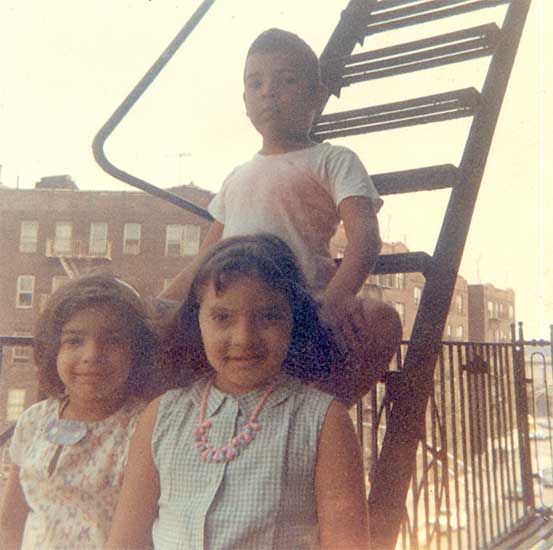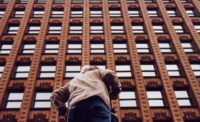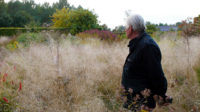Sixteen minutes into Game 2 of the 1977 World Series, a video crew helicoptering above Yankee Stadium captured footage of an inferno. It made for an absurd shot: the ballpark glittering in the night as a nearby South Bronx building burned to the ground. Naturally it attracted the attention of ABC’s play-by-play crew Howard Cosell and Keith Jackson. “My goodness, that’s a huge blaze,” Jackson gasped. “The fire department really has its work cut out for them,” Cosell replied.
Thanks to fungible memories and hazy recollections, that mundane back-and-forth mutated into Cosell’s era-defining pronouncement: “Ladies and gentlemen, the Bronx is burning.” He never said anything close, but the legend endures. It just sounds right. This was Fear City–era New York, and on live national television millions of viewers got their first glimpse of a runaway urban crisis.
For South Bronx residents, though, the conflagration was unremarkable—just another night in an unending nightmare. More than a decade of racist programs designed for economic, civic, and cultural segregation had wrought generations of physical and emotional destruction and dislocation. And, yes, fires, which by 1977 had made areas of the Bronx look more like postwar Germany than midcentury America. Nearly 90 percent of housing was burned out between the late ‘60s and late ‘70s, displacing some 250,000 residents. Many fires were arsons, set by crews working for insurance-hungry landlords. The cash-strapped city also fanned the flames of the catastrophe, closing one Bronx fire house after another. But the official narrative pinned the blame on no-good locals—kids, vandals, addicts, derelicts—with no pride of place.
Decade of Fire, Gretchen Hildebran and Vivian Vázquez Irizarry’s exceptional documentary, is a visceral correction of the record. The film, which opens at New York’s Metrograph theater on May 3, tracks the not-so-benign neglect that transformed a once-thriving, multicultural neighborhood into a burned-out husk—and celebrates the dedicated residents who rebuilt it. “It was a rough time, a rough experience,” Vázquez Irizarry tells Architectural Record. “But there’s this strength and this sense of persistence, and that comes from people saying, ‘We have a right to claim the Bronx as our home and we’re going to fight.’”
In 2002, Vázquez Irizarry and Julia Steele Allen, educators and community organizers, created a history curriculum for a South Bronx high school to reclaim their neighborhood’s narrative. The proposal was rejected by administrators as “too radical”—they balked at glorifying hip-hop and graffiti as art—but the women refused to give up. They connected with Hildebran, a filmmaker, and in 2008 began working on a film.

A decade later, their 72-minute documentary premiered at the DOC NYC festival in late 2018. (Steele Allen is a producer.) It’s narrated by Vázquez Irizarry, and her experience in the South Bronx—growing up, rallying her community, defending its future—forms the emotional backbone of Decade of Fire. But its slim runtime belies an epic scope, following threads of American history from Jim Crow to the Great Migration, redlining to urban renewal.
A bounty of archival footage, data unearthed from city and ad-hoc archives, and contemporary interviews helps Vázquez Irizarry and Hildebran investigate the heartbreaking, infuriating tragedy of a minority neighborhood left for dead by white politicians and phantom landlords. Vázquez Irizarry thought she knew the story, but she wasn’t always prepared for what they discovered. “This was bad, and sometimes it was too hard, too painful, and I just didn’t want to hear it,” she says. “But there were all these human decisions that were made and we needed to expose them.”
The film can feel like a relentless series of gut punches, but it eventually pivots toward hope. In the early ‘80s, the South Bronx turned a corner. Community groups like Banana Kelly Community Improvement Association and People’s Development Corporation took over buildings and restored them as low-cost housing. The fires stopped, and a sense of optimism returned. “We really get to a dark place and we wanted to leave people with this idea that organizing and standing up for your block and getting involved was worth it and can get you somewhere,” Hildebran says.
That message takes on renewed urgency today, as the specter of gentrification haunts the South Bronx. But those who survived the fires have long memories, and they refuse to allow the past to repeat itself: the film ends with recent footage of protests against planned proposals to rezone blocks that would fundamentally alter the South Bronx. By expertly weaving past and present into a continuum of experience, Decade of Fire becomes less a history lesson and more a call to arms—for a neighborhood, and a nation, again in the crosshairs of an escalating urban emergency that threatens to replicate the cataclysms of urban renewal.
“There’s a housing crisis in the country, not just in New York, and there needs to be a national conversation that grapples with housing as a right rather than a commodity,” Vázquez Irizarry says. “We always felt like this story was going to be relevant. It was relevant to the ‘80s, it was relevant for the ‘90s, and it’s relevant now.”
Decade of Fire screens at New York’s Metrograph from May 3-9, with Q&As, discussions, and panels about the film, the South Bronx, housing policy, and community organizing. Visit the Metrograph website for more information.












Post a comment to this article
Report Abusive Comment